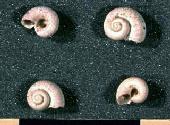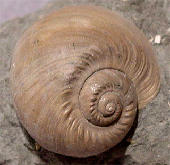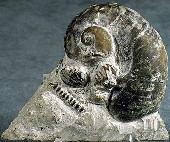 Gastropods
Gastropods
|
|
What are Gastropods? Gastropods, meaning “stomach-footed,” differ from all other molluscs by a developmental process called torsion, in which all the internal organs and nervous system are twisted at least 90° from their original positions. Familiar gastropods include limpets and snails and slugs, which lack a shell entirely. Less familiar gastropods include the sea slugs (nudibranchs), which do not have shells, and the sea butterflies (pteropods) and sea hares (heteropods), which may or may not have shells. Gastropods inhabit a wide range of marine, freshwater, and terrestrial environments. Not all gastropods have a great fossil record, but the record of the whole group goes back to the Cambrian. First known fossil occurrence: Cambrian. Last known fossil occurrence: Quaternary. This group has living relatives. Cool Gastropods links: Search for images of Gastropods on Google |
|



